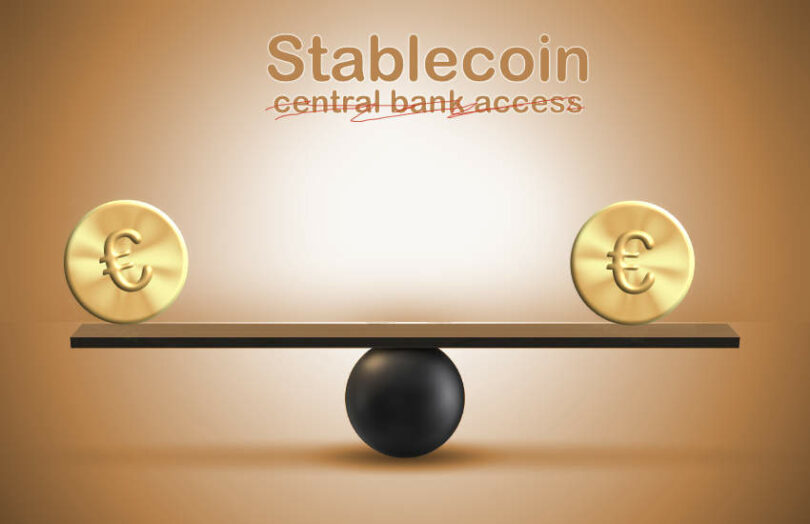The European Central Bank (ECB) board member Fabio Panetta delivered a scathing crypto speech today. While slamming cryptocurrencies he also advised central banks to resist the urge to allow stablecoin issuers access to central bank reserves.
He noted that if a stablecoin issuer can put the money at the central bank, it eliminates the investment risk. Hence the stablecoin becomes a close substitute for central bank money. “A stablecoin could displace sovereign money by using the large customer network of a big tech, with far-reaching implications,” said Mr. Panetta.
In the United States, the Treasury has acknowledged the potential for central bank deposits to provide the safest asset backing. And the current draft U.S. stablecoin Bill allows for it. So Congress might remove that ability of federal agencies to block it.
Panetta mentions Circle and USDC
Panetta’s speech referred to USDC stablecoin issuer Circle’s previous attempt to access central bank money by creating a bespoke money market fund with BlackRock, as we previously reported in depth. The Federal Reserve closed that particular door. But Circle has repeatedly lobbied for central bank account access.
Earlier this year USDC lost its peg when Silicon Valley Bank went bankrupt. The stablecoin issuer held $3.3 billion in reserves at the bank and today Bloomberg reported that Circle was the largest depositor covered by the government bail out.
Last month Circle said it had applied for a license in France. Under the EU’s MiCA regulations, issuers can get a crypto or stablecoin license from a single jurisdiction providing access to the entire European Union. Until now, Circle’s primary European base has been Ireland.
Wholesale digital euro exploration back on the cards
Panetta also discussed enabling financial institutions to use a central bank settlement asset for DLT payments, a wholesale CBDC. Previous ECB wording implied that it might only explore a trigger payment solution which links DLT networks to existing payment systems. However, today Panetta stated that another option to be explored is DLT-based central bank money. And the market will be involved in the exploratory work.
Meanwhile, the Bank of Italy is conducting a wholesale CBDC trial after extensive tests by the Banque de France.
The key EU jurisdictions responsible for Europe’s payment infrastructure are France, Germany and Italy. The latter two both favor trigger payments over wholesale CBDC.






